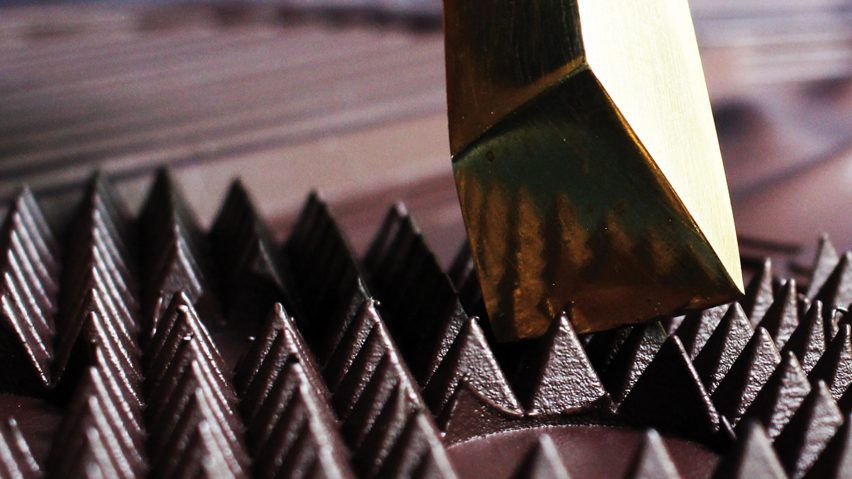Studio Appétit has designed a range of chocolates for hotel goers to enjoy, including bars engraved with guests' initials and blocks that could be used to stage a treasure hunt.
The Dutch culinary design studio collaborated with chocolatier Oialla to design the Room Service collection, which includes five ranges of chocolates, each varying in flavour and form.
Chocolates in the range titled Flavour Exploration Club are intended to be strategically placed throughout any hotel, in order to take visitors on a "sensorial journey" around the building.
Upon arrival, hotel guests would be presented with a manual detailing the origin, flavour and back story of each chocolate, as well as clues to its whereabouts.
The Terrains range is based on the details found in natural landscapes. Each chocolate is equipped with tools that allow visitors to weigh and break the bar.
A third range, titled PRTCL, features solid cubes of chocolate with initial engraved into them. These are packaged in a leather-lined wooden box, intended to be refilled regularly throughout a guest's stay.
"PRTCL is aimed at guests who are beyond trends and existing brands, and are seeking the epiphany of bespoke crafted tradition," said the designers.
Commodity – a fairtrade chocolate bar – is embossed with its ingredients list, date and carbon footprint, while Stripes is a bespoke collection of chocolate with a surface reflective of its geometric packaging.
The flavour of each chocolate varies throughout the year, with floral flavours for spring and alcohol-infused chocolate for summer.
"Our agenda isn't to necessarily add a new food and beverage venue to the hotel, but to create exciting and impactful concepts done with the existing infrastructure," Ido Garini told Dezeen.
Chocolate continues to the be the most popular food for designers to experiment with.
Dutch-based studio Michiel Cornelissen Ontwerp recently created a chocolate printer that produces bespoke intricately designed treats, while Universal Favourite has created colourful mix-and-match chocolates from tessellating 3D-printed moulds.

